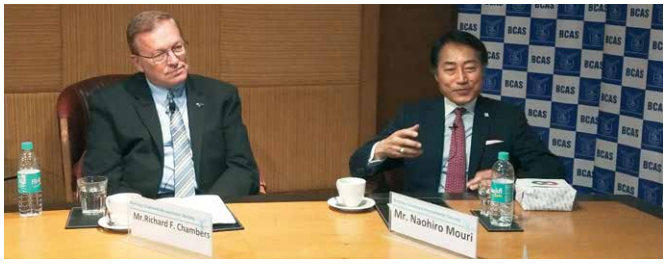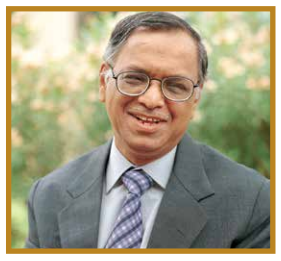The Bombay Chartered Accountant Journal
Editorial
The Bombay Chartered Accountant Journal
— History & Origins
Gautam Nayak
Chartered Accountant
The Bombay Chartered Accountant Journal (or BCAJ as it is
commonly referred to), the flagship of the Bombay Chartered Accountants’ Society
(BCAS), is today very much an integral part of the office & practice of most
practising chartered accountants in Western India, besides many others in other
parts of India. It is an institution which has always been around to guide and
help Chartered Accountants in their practice, by sharing knowledge and
experience of its members. Those of us who qualified after 1970 in particular,
have benefitted greatly from the BCAJ.
How has the BCAJ developed and what were its origins ? It
would be interesting to look into the past and to note the contribution of so
many professionals over the generations, which have gone into the making of the
BCAJ as it is today.
The BCAJ in a sense is a reflection of the activities of BCAS
— it has kept pace with the activities of BCAS. As the activities of BCAS have
grown and diversified, so have the contents of the BCAJ, to cater to the growing
needs of its members and the diversifying nature of a CA’s practice.
The origins of the BCAJ were in the form of a small beginning
made by BCAS soon after its formation in April 1950, by issuing cyclostyled
bulletins to its members at various times when there were amendments of interest
to members, such as at the time of the budget, when legislative amendments were
carried out, etc. At that time, the text of these various amendments, including
the Finance Bill, the Finance Minister’s Budget Speech, etc., were not so
readily available or as widely reported as they are today. These bulletins
therefore provided an essential service to practising chartered accountants.
From December 1962, the cyclostyled bulletins were converted into bi-monthly
printed bulletins. These bulletins contained the full text of Tribunal
decisions, which at that point of time were not covered by any tax reports.
However, lack of postal concession for a bi-monthly bulletin dictated the need
for a monthly journal.
From July 1967, the printed bulletins came out in a monthly
form, being the immediate predecessor of the BCAJ in its present bound form.
The beginning :
The first issue of the BCAJ in its present form was published
in January 1969, a year in which P. N. Shah was the President of BCAS. That
issue consisted of 40 pages and was available for an annual subscription of
Rs.18. Shri Sham G. Argade was the first Editor of the Journal and Chairman of
the Journal Committee, with B. C. Parikh as the convenor of the committee, the
other members of the committee being Haren B. Jokhakar, Homi M. Damania and A.
N. Lilani.
Given its origins, this first issue of the Journal was
devoted entirely to direct taxes. It carried the following contributions :
1. An article by D. D. Shah on ‘Is Honest Payment of Taxes
Possible ?’, a subject which is relevant even today;
2. The minutes of the meeting of the Direct Taxes Advisory
Committee, which discussed issues relating to interest on delayed refunds and
unnecessary fixation of hearings (which are problems which continue even 40
years later !);
3. The text of the address of the Chief Justice of India,
P. N. Bhagwati, at the inaugural function of the Gujarat Bench of the Income
Tax Appellate Tribunal;
4. The full text of three decisions of the Income Tax
Appellate Tribunal. This today continues as a feature ‘Tribunal News’, but
with decisions given now in a summarised form;
5. News about the activities of the Society in the form of
‘Society News’, a feature which continues even today; and
6. The text of various notifications and circulars.
The first decade — 1969 to 1978 :
Sham Argade, who had been the Editor of the bulletins, which
were the predecessors of the BCAJ, continued as Editor of the BCAJ throughout
its first decade. It needs to be kept in mind that in those days, in the absence
of computers and with printing not being as high-tech as it is today, the effort
that went into every aspect of production of the journal was much more than that
required today. One can only imagine the efforts put in by Mr. Argade, who put
the BCAJ on a sound and systematic footing during the first few difficult years
of its infancy. One understands that Mr. Argade was almost single-handedly
responsible for the production of the BCAJ in the initial years.
Right from the beginning, one aspect which has contributed to
the consistency, continuity and uniqueness of the BCAJ has been the dedication
and devotion of its regular contributors. Most contributors to the BCAJ have
been contributing regularly for over a decade.
In the issue of May 1969, P. N. Shah contributed his first
article to the BCAJ on the subject of ‘Computation of Income from Salaries,
House Property and Other Sources’. He continues to contribute regularly to the
BCAJ every year ever since then, over a span of 40 years. In fact, in the month
of June 1970, he contributed an article on ‘Amendments in Direct Tax Laws’,
analysing the amendments made to direct tax laws by the budget, a subject on
which he continues to contribute to the BCAJ every year since then. It continues
to be a must-read for every tax professional each year ! This must surely be a
record of sorts for any professional contributor to any professional journal !
Another regular contributor, Arvind H. Dalal first wrote on
the subject ‘Depreciation and Development Rebate’ in the BCAJ of August 1969. S.
E. Dastur also contributed an article on the subject of ‘Penalties under Direct
Tax Laws’ in the BCAJ of June 1970. Pinakin D. Desai first contributed an
article to the BCAJ in April 1977 on the subject of ‘Capital and Revenue’. Ashok
K. Dhere started his contributions to the BCAJ in November 1977, with a
compilation on stamp duties in Maharashtra.











